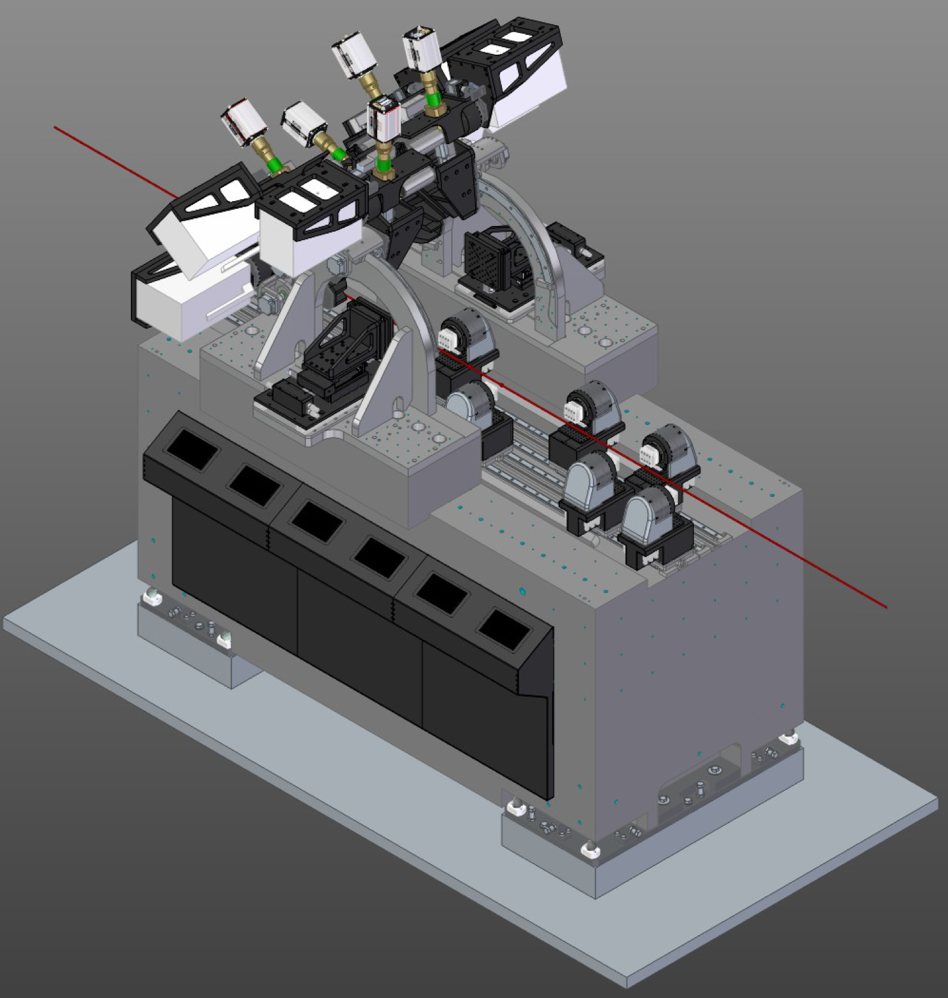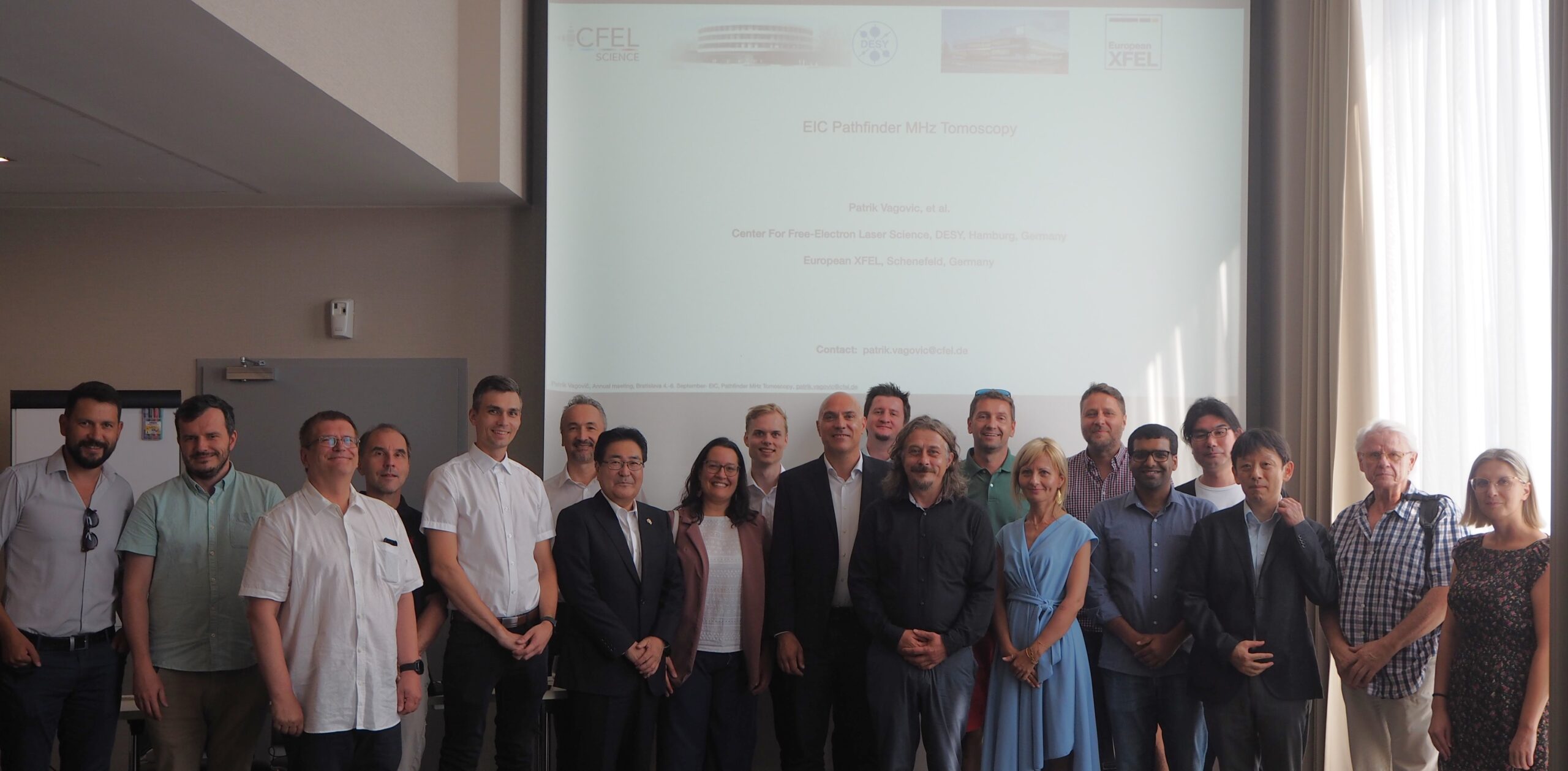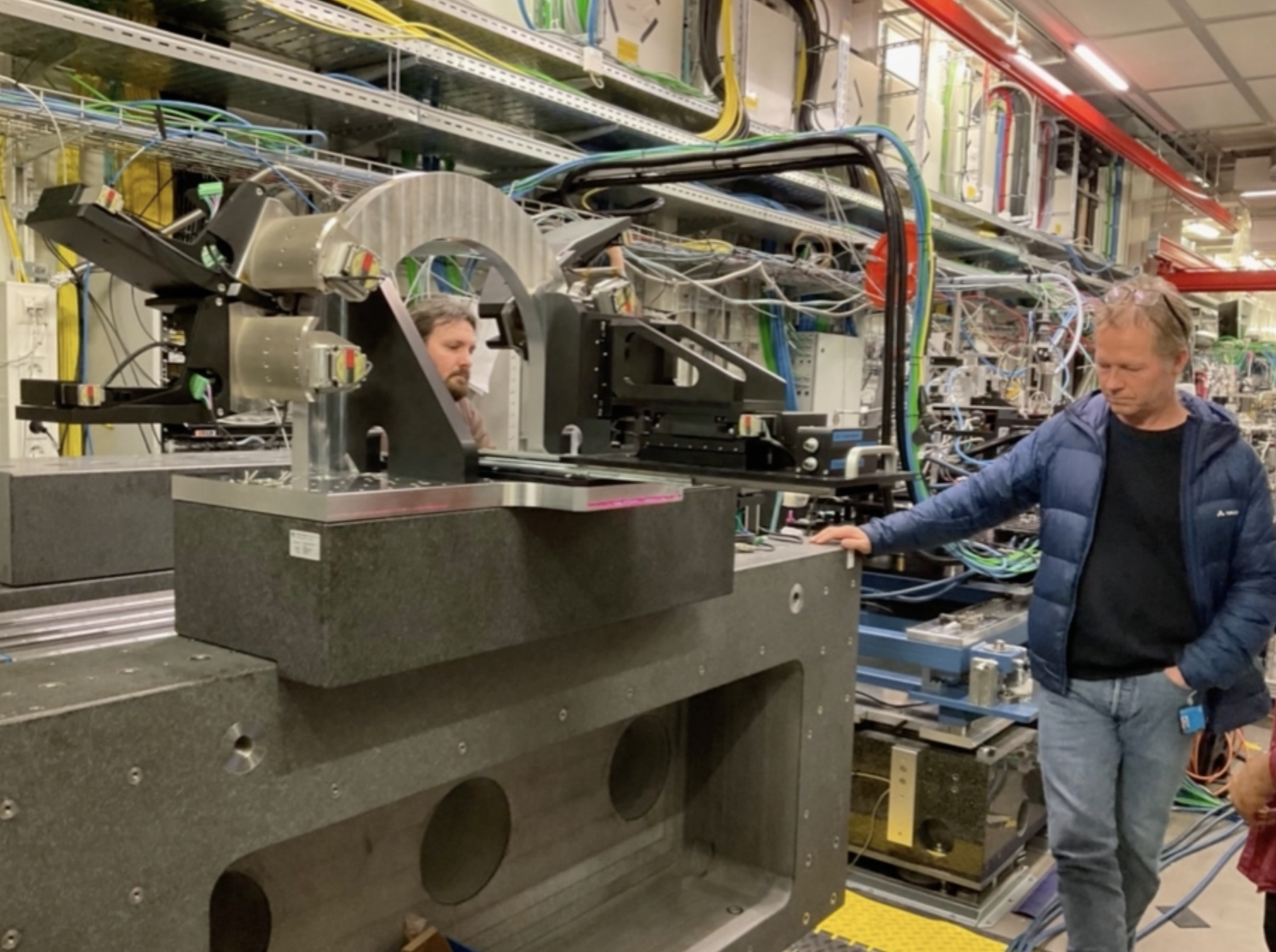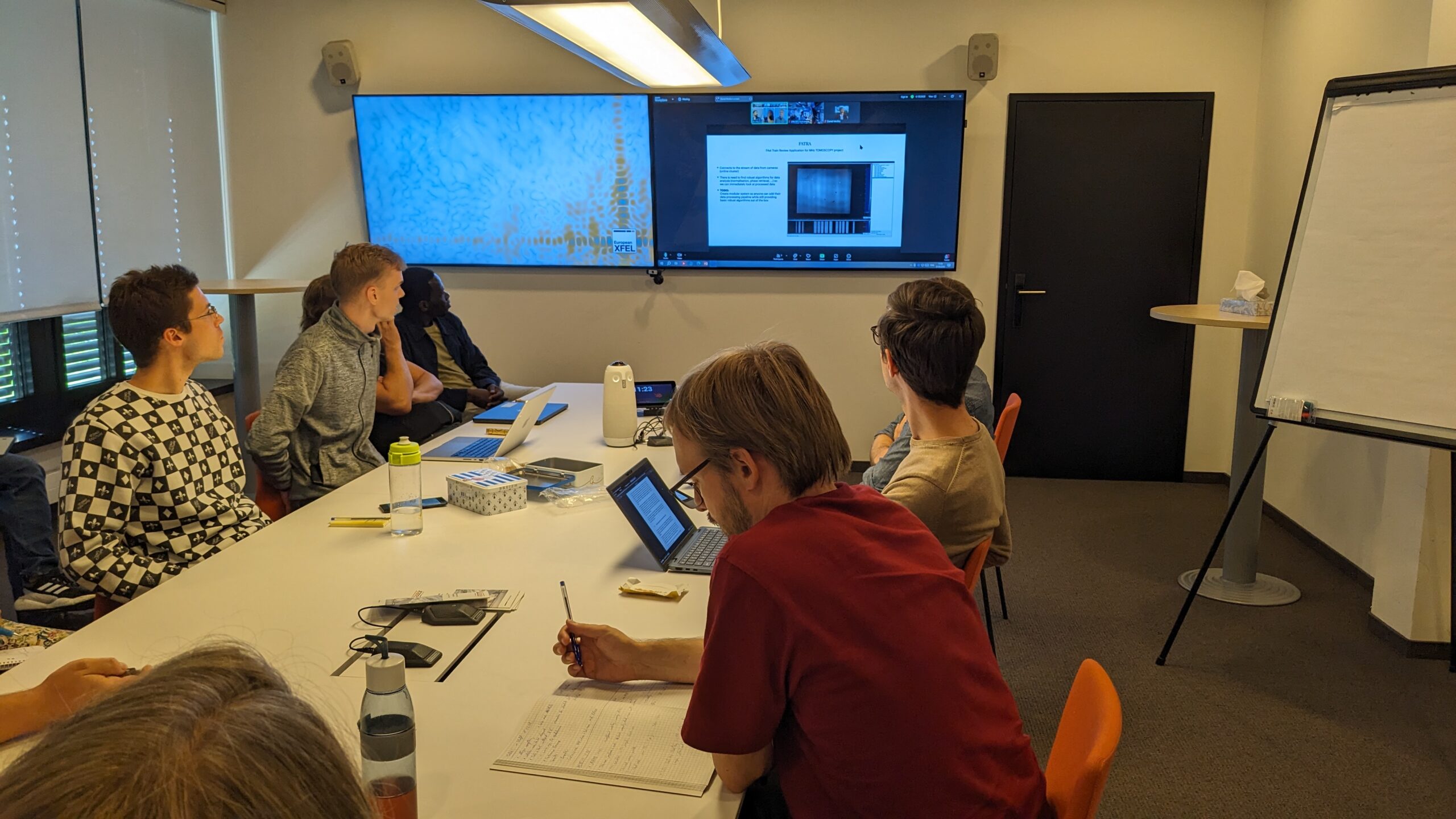
MHz – Tomoscopy
is the new Horizon Europe project aimed to build the first multiprojection hard X-ray microscopy device with phenomenal sampling rate, capable to observe fast phenomena in 3D. We believe this will enable whole new field of opportunities for science and technology, by direct observation of dynamics – especially those objects which are opaque to other imaging modalities – up to now accessible only to theoretical simulations and speculations
MHz Tomoscopy
About project
Modern enabling technologies, such as additive manufacturing or cavitation peening used in the aerospace and automotive industries, suffer from a lack of diagnostic tools. To date, one cannot provide relevant volumetric information about the fast processes involved. The realization of this project will break the current limits in fast, 4D X-ray microscopy by three orders of magnitude. It will be possible to visualize and characterize dynamics reaching velocities up to ~km/s for the first time with micron-scale resolutions. Instead of sample rotation, we will generate multiple X-ray probes and virtually rotate them around the sample to obtain with a single exposure multiple angular views simultaneously. Using modern X-ray sources with very high brilliance, each such 3D frame may be sampled at kHz rates at synchrotrons and even MHz rates at X-ray free-electron laser sources.
Read more >

Partners
Our recent news
News
-

2nd Annual Meeting of HE EIC MHz Tomoscopy project
From September 4-6, the 2nd Annual Meeting of the HE EIC MHz Tomoscopy Project was held in Bratislava, Slovakia. The opening session on September 4th was attended by representatives from the Italian and Japanese embassies in Slovakia, the State Secretary of the Slovak Ministry of Education, the Director of the Visegrad Fund, and partners from…
-

Installation of MHz-Tomoscopy setup at EuXFEL
Installation of MHz-Tomoscopy setup at EuXFEL – 11.4.2024
-

Data processing presentation
At 21st August 2024, Daniel Mosko presented at SPB/SFX meeting analysis and processing of experimental data and FATRA application, which Is being developed at University of Pavol Jozef Safarik for MHz Tomoscopy project.
check all latest articles >

This project has received funding from the European Union’s Horizon Europe research and innovation programme under grant agreement No. 101046448
© 2023 MHz – Tomoscopy. All Rights Reserved.











